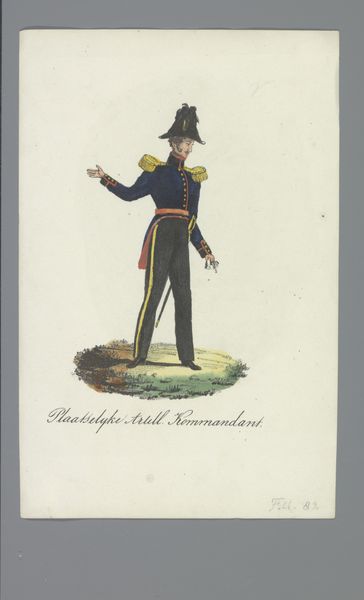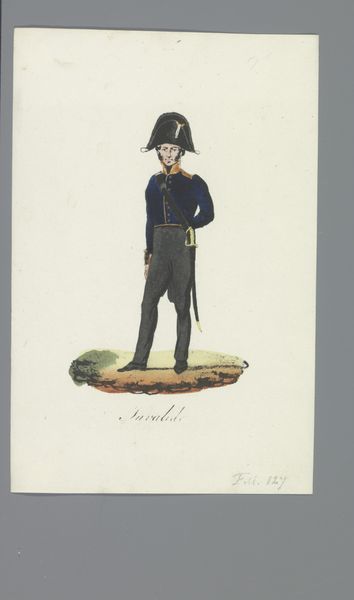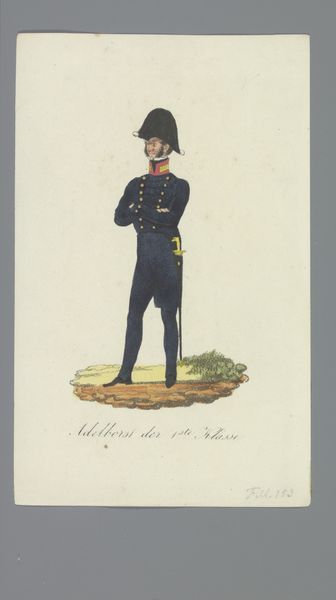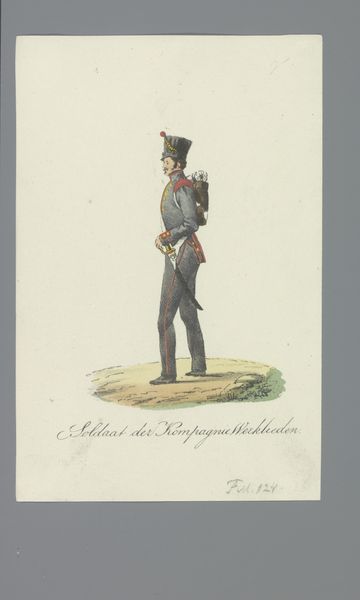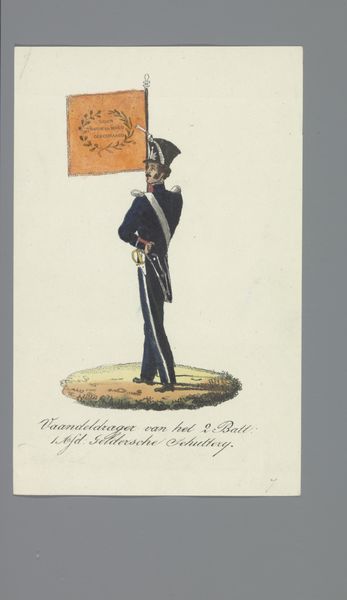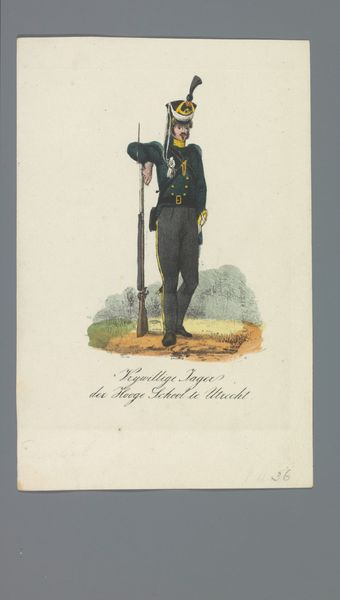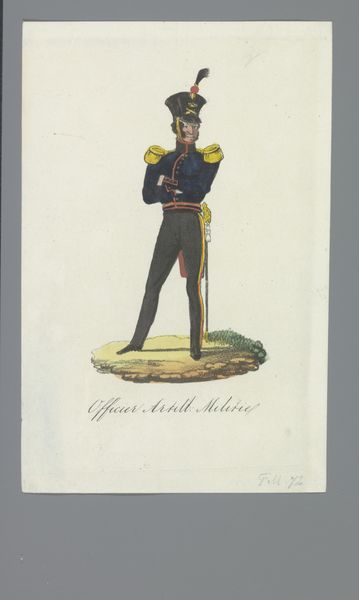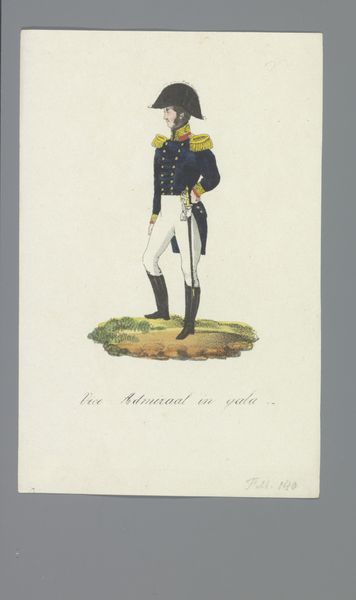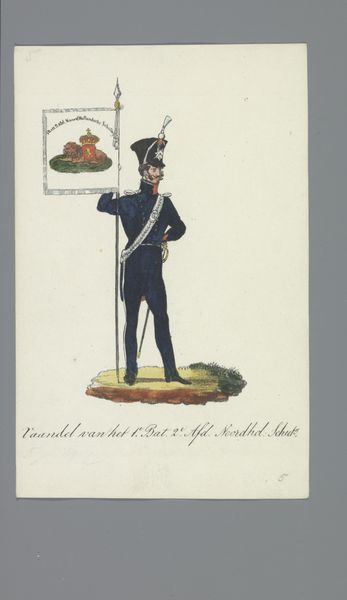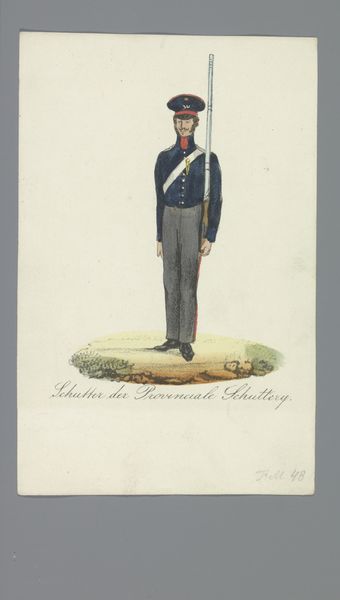
drawing, watercolor
#
portrait
#
drawing
#
watercolor
#
romanticism
#
watercolour illustration
#
genre-painting
#
history-painting
#
watercolor
Dimensions: height 170 mm, width 110 mm
Copyright: Rijks Museum: Open Domain
Editor: We’re looking at "Tamboer der Schutterij (Flank Komp.)", a watercolor drawing by Albertus Verhoesen, dating from around 1835 to 1850. It feels like a carefully rendered portrait of a very serious drummer. What strikes you about this work? Curator: Immediately, the drum itself calls out to me. Notice the colour, and how it contrasts with the solemn, dark uniform. In many cultures, the drumbeat represents the heartbeat, the pulse of a community, the rhythm of war or celebration. In this context, is he announcing something? Does he *represent* the announcement itself? Editor: That’s interesting. He doesn’t look like he’s actually *playing* the drum. So maybe the symbolism is more about potential, rather than action? Curator: Exactly! Think of the symbolic weight this image might have carried then. Civic guards were deeply tied to local identity. And consider the colors – the Dutch flag echoes here. This isn't just a portrait; it’s about Dutch identity, pride, and readiness. Even the plume on his hat adds to the visual symbolism of readiness. Do you get a sense of the psychological effect the artist intended? Editor: I think I do. The sharp lines of the uniform, the slight upward tilt of his chin...it projects confidence, maybe even a bit of defiance. The symbols definitely amplify that feeling. Curator: Precisely. The romanticism movement looked back at national histories. This is a romantic, nationalistic statement. Understanding the symbolism helps us unlock its deeper cultural meaning and intended effect on its original audience. Editor: It's amazing how much can be communicated through these visual symbols. It gives me a totally different perspective on the piece! Curator: Indeed! The real art lies in deciphering the symbolic language that connects us to the past.
Comments
No comments
Be the first to comment and join the conversation on the ultimate creative platform.

